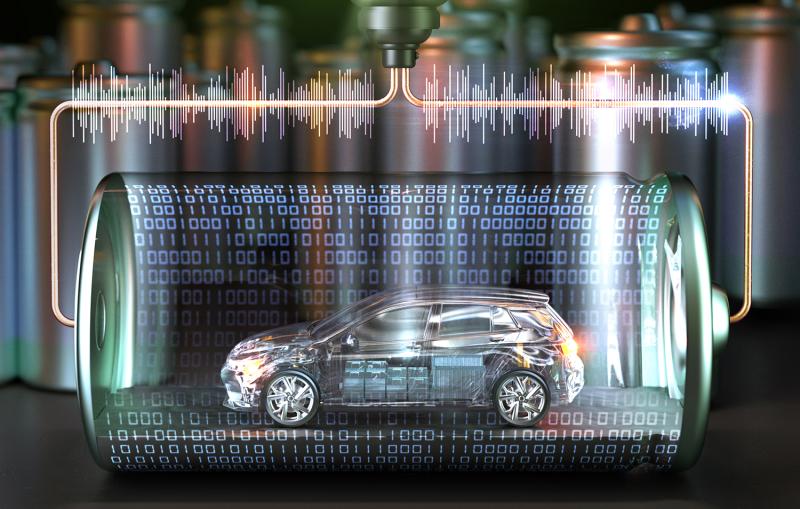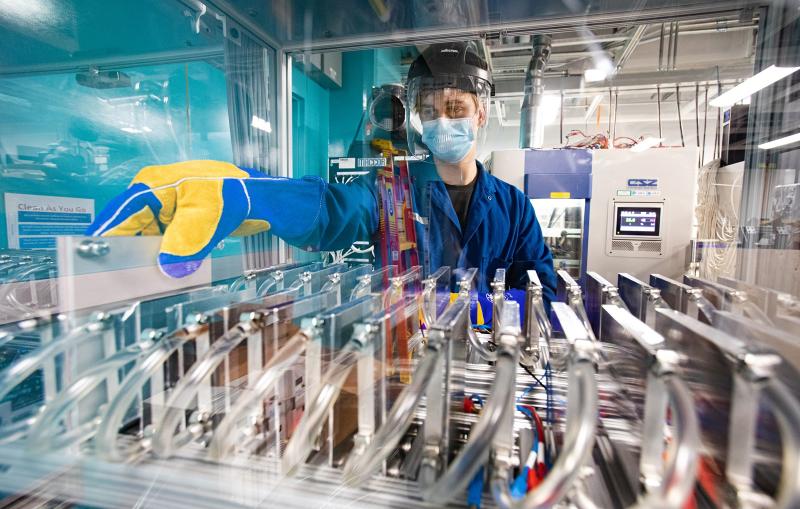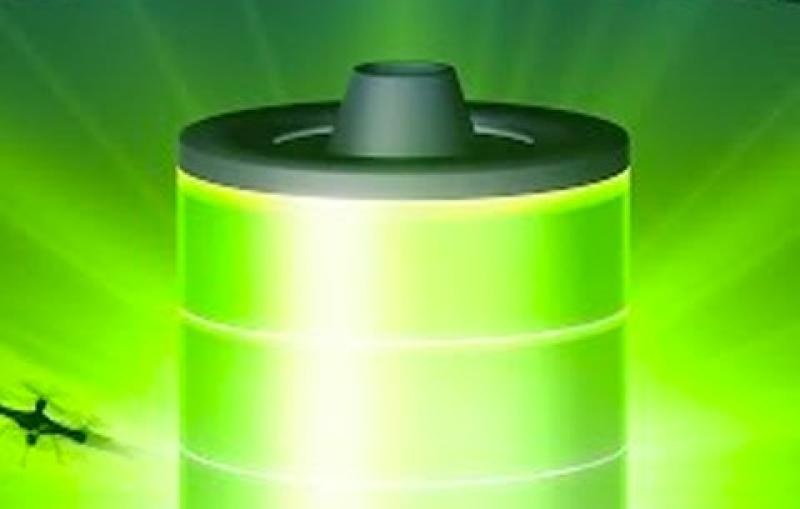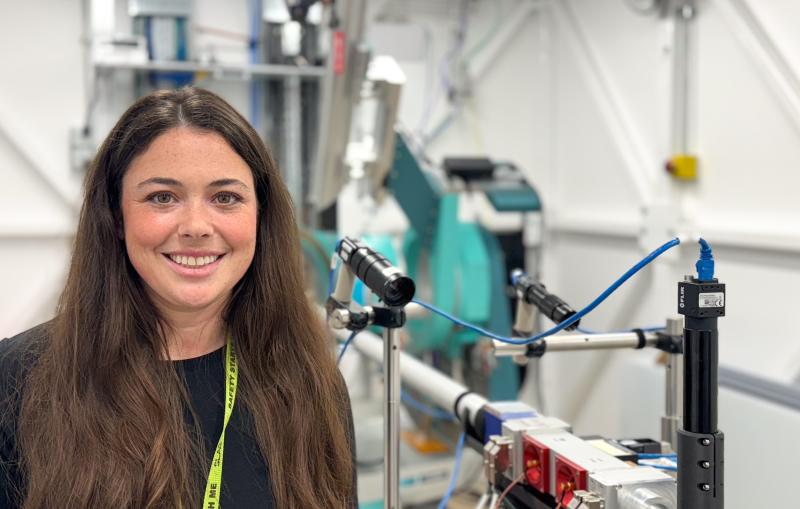Hans-Georg Steinrück receives 2019 Spicer Award for energy storage research at SLAC’s X-ray synchrotron
This early-career scientist has undertaken challenging projects with significant implications for lithium-ion batteries.
By Bobbi Fagone
Hans-Georg Steinrück, a versatile scientist who has made important contributions to research involving lithium-ion batteries, organic transistors, and catalysis, has been chosen to receive the 2019 William E. and Diane M. Spicer Young Investigator Award.
This award is given each year to early-career scientists who perform research at the Stanford Synchrotron Radiation Lightsource (SSRL) at the Department of Energy’s SLAC National Accelerator Laboratory. The Spicer award will be presented to Steinrück during the 2019 SSRL/LCLS Annual Users’ Meeting and Workshops at SLAC on Sept. 26.
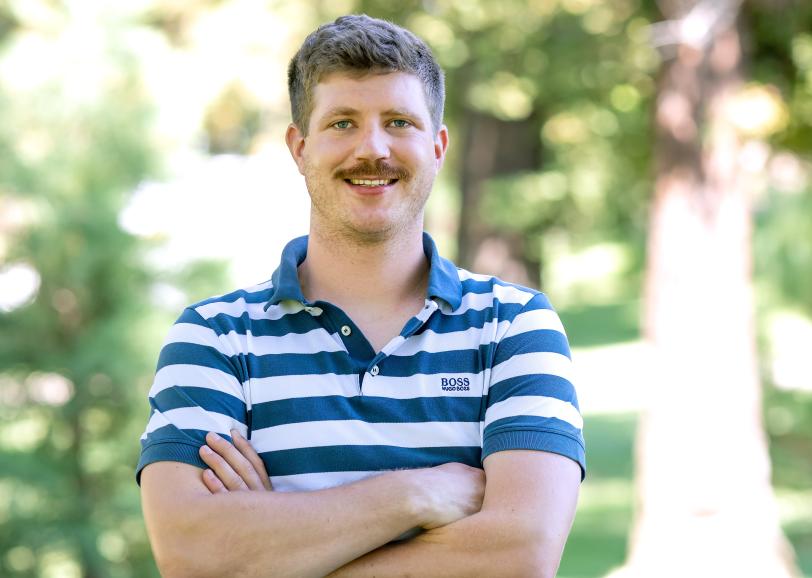
Educated in Germany, Steinrück’s training is in physics and X-ray scattering, a technique that helps scientists understand the structure, composition and physical properties of materials. He began working at SSRL in 2015, concentrating on energy storage, a key area of strategic focus for SSRL and SLAC.
“I wanted to apply my background to energy-related materials,” he says. “SLAC and the SSRL Materials Sciences Division are fantastic places to do that because there’s such a broad range of energy-related research going on here.”
For the past four years, Steinrück has undertaken several challenging projects using X-rays to investigate fundamental aspects of battery operation. His results have had significant implications for lithium-ion batteries, in particular concerning how ions are transported into the battery electrode. This can determine the rate at which a battery can be charged and discharged.
Despite being new to the field of energy storage when he started at SLAC, Steinrück has since made a significant impact on SSRL’s footprint in this field with several publications in high impact journals, such as Nano Letters, Energy and Environmental Science and Joule.
Working with colleagues, Steinrück has advanced a new technique to help understand the motion of ions in electrolytes, a key element of battery function, according to Nitash Balsara, UC Berkeley professor of Chemical and Biomolecular Engineering, and senior faculty scientist at Lawrence Berkeley National Laboratory. “The data, though not yet published, provides a fertile testing ground for theories that date back to Nernst, Planck and Onsager,” Balsara writes in his nomination letter. “This is a remarkable accomplishment for a young scientist entering a field that is over 150 years old.”
Michael Toney, distinguished staff scientist at SLAC and division head, SSRL Materials Sciences, writes in his nomination letter, “Due to his deep knowledge, Hans is the ‘go-to’ staff for X-ray scattering for the SSRL user community. Hans has also worked to attract new users to SSRL largely through interactions within the Joint Center for Energy Storage Research.” Toney also commends Steinrück’s outreach to users and students through scientific talks and summer school sessions.
“This award is a reflection of my wonderful coworkers and collaborators at SSRL including Chuntian Cao, Christopher Takacs and Michael Toney,” says Steinrück. “I also want to acknowledge the support at SSRL, as well as sector 8 at APS where we did our ion velocity measurements.”
Steinrück says that receiving this award motivates him to pursue his research even further. “I’ve been very fortunate to have collaborated with people from various backgrounds. Input from these scientists can really help solve some of the energy science-related problems,” he says.
SSRL is a DOE Office of Science user facility.
Contact
For questions or comments, contact the SLAC Office of Communications at communications@slac.stanford.edu.
SLAC is a vibrant multiprogram laboratory that explores how the universe works at the biggest, smallest and fastest scales and invents powerful tools used by scientists around the globe. With research spanning particle physics, astrophysics and cosmology, materials, chemistry, bio and energy sciences and scientific computing, we help solve real-world problems and advance the interests of the nation.
SLAC is operated by Stanford University for the U.S. Department of Energy’s Office of Science. The Office of Science is the single largest supporter of basic research in the physical sciences in the United States, and is working to address some of the most pressing challenges of our time. For more information, please visit science.energy.gov.

